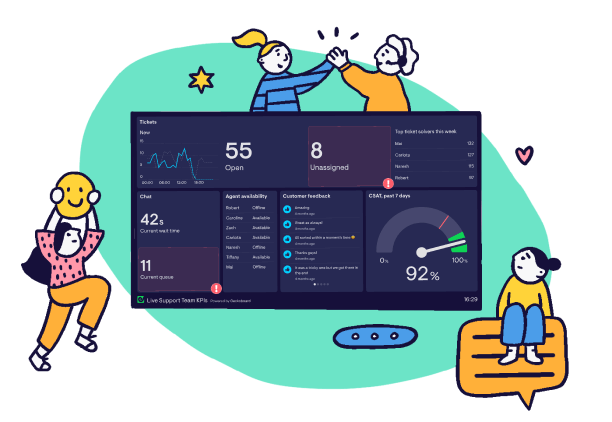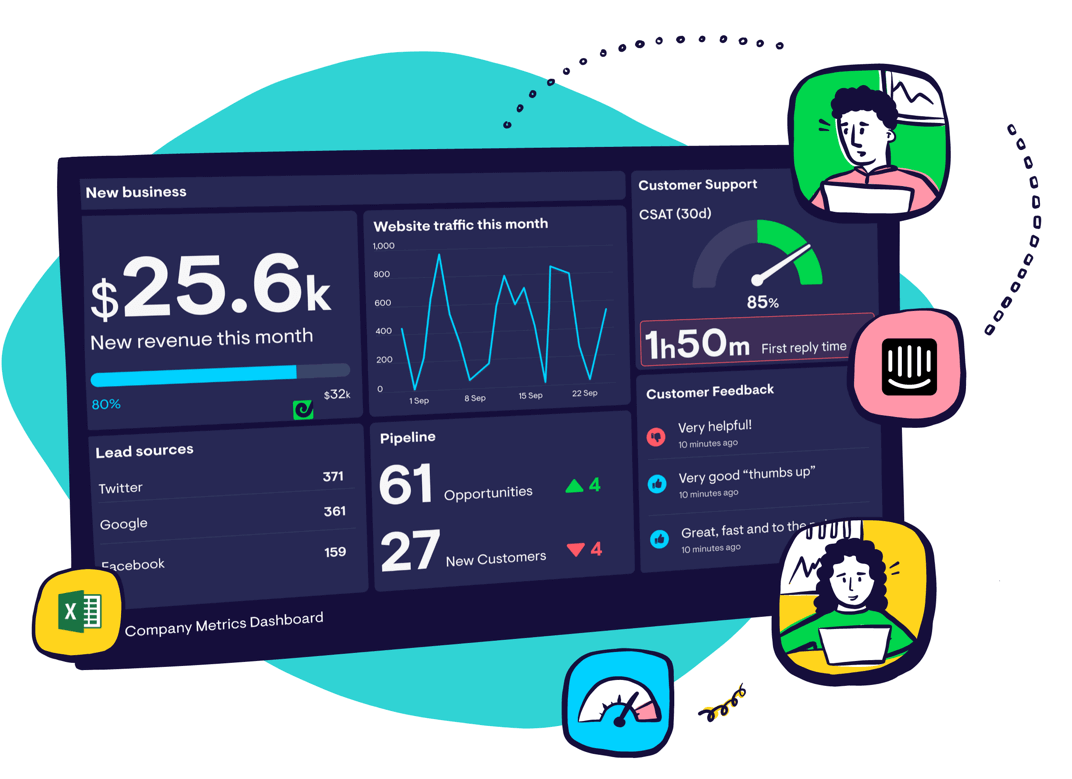Average Reply Time (ART)
What is First Response Time?
Average Reply Time (ART) measures the time elapsed between a customer messaging support and an agent replying to it. Unlike First Response Time, Average Reply Time includes any time a customer has to wait for a reply. It is not limited to First Touch.
Get our free 52 page Customer Support KPI handbook
Get the eBook
Why is it important to measure Average Reply Time?
Reply time is often a major source of dissatisfaction among customers and by measuring yours you can help make sure that customers aren’t kept waiting for long periods of time.
When customers take the time to call or send a message to your business it’s likely as a result of having a problem which is why it’s so important to respond promptly, whether it’s the first contact or a later interaction.
According to Forrester Research, 77% of customers say that valuing their time is the most important thing a company can do to provide them with good online customer service.
Higher levels of customer satisfaction are linked to quicker response times. According to research done by HubSpot, 90% of customers rate an ‘immediate’ response to a customer service question as ‘important’ or ‘very important’, and 60% of customers define ‘immediate’ as 10 minutes or less.
How to calculate Average Reply Time
Average Reply Time is simply the average time a customer has to wait for a response. This is calculated by summing all the time between receiving a customer message and a reply being sent and dividing it by the number of customer messages.
Automated responses, those that are sent by chatbots, should not be included.
Total customer time spent waiting for a reply / No. of customer messages needing a reply = Average Reply Time
Usually, CS teams prefer to look at Average Reply Time that doesn’t count time outside of business working hours. So, as an example, if a customer emailed at 11:00 pm on a Sunday, but office hours didn’t begin until 9:00 am on Monday, and the customer is not replied to until 10:00 am, the reply time for that customer would be 1 hour rather than 10.
However, looking at your Average Reply Time as the customer actually experiences it (i.e. including all hours) is also useful and may justify extending support coverage to more time zones or even the weekend.
Ticketing systems like Zendesk, Freshdesk, Help Scout and Intercom will calculate the Average Reply Time for you automatically.
Filtering Average Reply Time by team, agent, or time zone can be useful for identifying areas for improvement.
Average Reply Time, and customer expectations over what’s acceptable vary depending on the channel. Customers generally expect to wait longer if they send their queries via email as opposed to through chat, social media, or picking up the phone and calling.
Give your support team a boost
With Geckoboard’s real-time dashboards, everyone knows exactly what’s happening in CS right now.
Find out more
How does Average Reply Time differ from First Response Time?
Average Reply Time and First Response Time are the same except First Response Time (FRT) only includes the time taken to reply to first contacts from a customer. Average Reply Time meanwhile includes all the time a customer waits for a response irrespective of whether it’s the first message or not.
Both are average times taken from a ticket being received to it being answered, and both are KPIs commonly tracked by CS teams.
First Response Time is the more popular metric because of how strongly it ties to CSAT. When a customer raises a ticket for the first time a quick initial reply reassures them that the business cares about solving their problem and provides an indication of what kind of experience they’re likely to have.
However Average Reply Time is a useful health metric to ensure that follow up enquiries aren’t being neglected.
Teams may find their First Response Time is longer than their Average Response Time. This is not necessarily a bad thing as spending more time on a first reply may lead to better Average Resolution Times.
Industry benchmarks for Average Reply Time
As we say with all benchmarks, there’s huge variation between industries and businesses. With First Response Time there’s also a large difference between channels. Acceptable First Response Times are slower for email than chat and social media.
A recent study of SuperOffice customers reported an Average Reply Time for email of 12 hours and 10 minutes. But the fastest companies have an average response time of one minute.
A fast reply time can help your business stand out from competitors, but it’s also important not to rush replies at the expense of them being useful as this can harm overall customer satisfaction. First Contact Resolution Rate, Average Resolution Time and Agent Touches per Ticket can be useful health metrics to track to ensure this isn’t happening.
